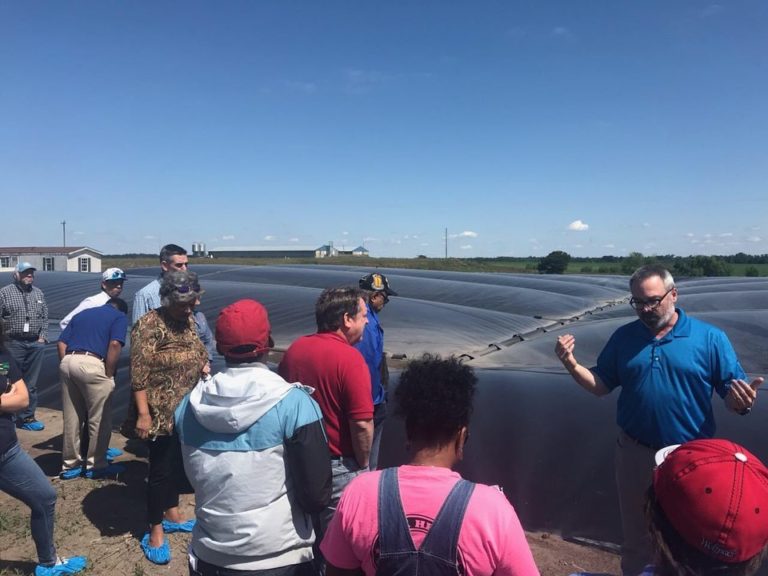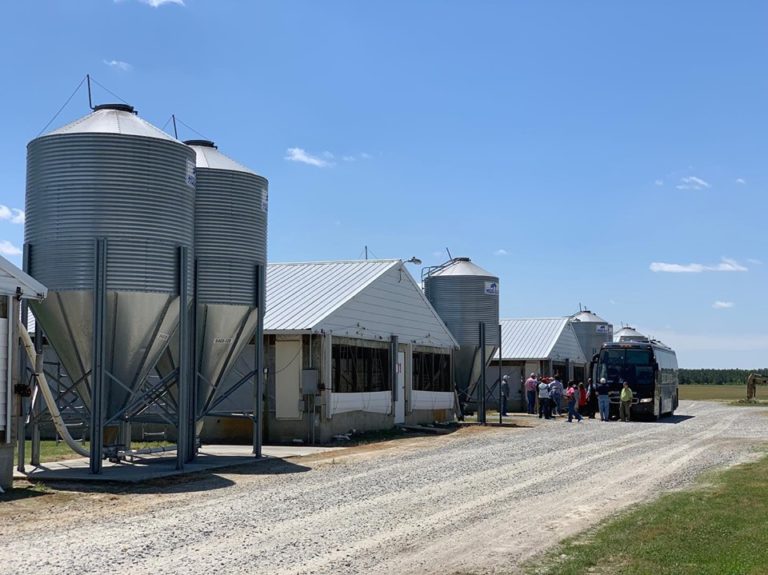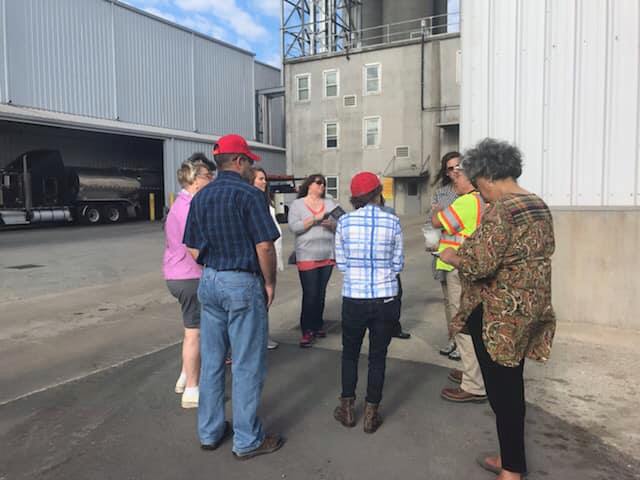An important part of the work we do at NC Farm Families is educating people about our farms. There are so many people in our state who have never set foot on a farm and don’t have any first-hand knowledge of the role our farmers play in feeding our nation and fueling our economy.
One way we’re working to change that is inviting people to spend a day in eastern North Carolina touring our farms and facilities.
NC Farm Families recently had the opportunity to spend the day with more than two dozen state legislators. It included first-term legislators and politician veterans from both sides of the aisle. They came from Raleigh, and Charlotte, and Greensboro, and points in between from across the state.
The tour began at a feed mill in Warsaw, then moved on to turkey farms, hog farms, and a renewable energy project that is now turning hog waste into natural gas.
Along the way, the legislators had the opportunity to have real conversations with our family farmers. They had a chance to peek inside barns, stand next to lagoons, and see for themselves what it is like to live and work on a North Carolina farm.
We are so grateful to each and every one of the legislators who took time out of their busy schedule to join us, to Rep. Jimmy Dixon for helping organize the tour, and to the individual farmers who graciously opened their farms to visitors.
We believe there is no better way to showcase the importance of North Carolina’s family farms than to let people see them for themselves.












